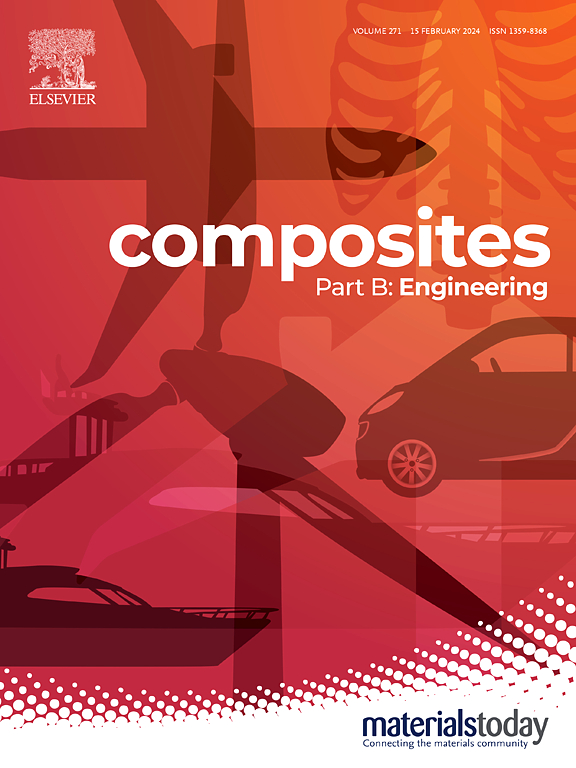Manufacturing a 3D stitched highly unitized PRSEUS-based conformal propellant tank: Lessons learned
IF 12.7
1区 材料科学
Q1 ENGINEERING, MULTIDISCIPLINARY
引用次数: 0
Abstract
Lightweight cryogenic propellant tanks are critical components of space launch systems and next-generation supersonic or hypersonic aircraft using liquid hydrogen or liquid oxygen as propellants. In recent years, NASA has made significant efforts to develop reusable cryogenic propellant tanks like those developed during the X-33/VentureStar program. However, mechanical/bolted connections, penetrations and joints in the tank wall, and gaps/holes were some of the major causes of the premature failure of the X-33 tank. This study demonstrates the manufacturability of a novel and more efficient conformal tank by using advanced 3D stitched composite technology and fabrication methods. Through-thickness stitching enables the design of conformal tanks with uninterrupted load paths between skin, stringer, and frame elements by maintaining structural continuity. A one-third scale externally stiffened carbon/epoxy composite tank was manufactured using the Pultruded Rod Stitched Efficient Unitized Structure (PRSEUS) panel construction. Complex preform assemblies were selectively stitched and built without the need for exacting tolerances and accurately net molded using resin infusion in a single oven-cure operation using high-precision outer mold line tooling. The resulting structure is a one-piece unitized assembly with seamless co-cured interfaces. The details of tool design, preform construction, stitching procedures, and infusion methodologies are described in the paper.
求助全文
约1分钟内获得全文
求助全文
来源期刊

Composites Part B: Engineering
工程技术-材料科学:复合
CiteScore
24.40
自引率
11.50%
发文量
784
审稿时长
21 days
期刊介绍:
Composites Part B: Engineering is a journal that publishes impactful research of high quality on composite materials. This research is supported by fundamental mechanics and materials science and engineering approaches. The targeted research can cover a wide range of length scales, ranging from nano to micro and meso, and even to the full product and structure level. The journal specifically focuses on engineering applications that involve high performance composites. These applications can range from low volume and high cost to high volume and low cost composite development.
The main goal of the journal is to provide a platform for the prompt publication of original and high quality research. The emphasis is on design, development, modeling, validation, and manufacturing of engineering details and concepts. The journal welcomes both basic research papers and proposals for review articles. Authors are encouraged to address challenges across various application areas. These areas include, but are not limited to, aerospace, automotive, and other surface transportation. The journal also covers energy-related applications, with a focus on renewable energy. Other application areas include infrastructure, off-shore and maritime projects, health care technology, and recreational products.
 求助内容:
求助内容: 应助结果提醒方式:
应助结果提醒方式:


